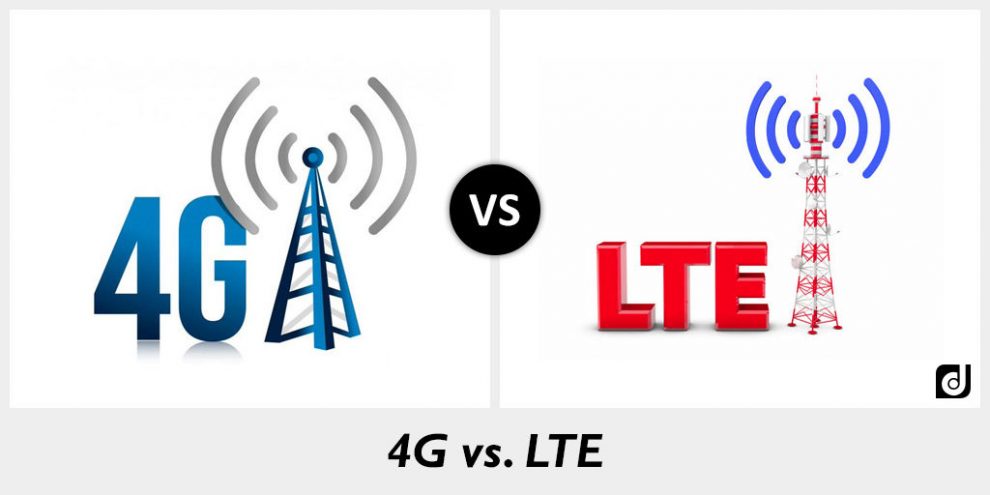Modern cellular world is always advancing with new technology every year. There is no doubt that for the average cell-phone user this difference can be confusing and often frustrating. In this post, we are going to explain to you how LTE is Different from 4G.

Telecom companies always promise the fastest and most powerful networks, but who really knows what are they delivering? To understand at least some of that, you have to first understand the underlying technology that powers these claims.
What do 4G and LTE really mean in the real world? Let us take a look and determine what differences there are and how they are useful consumers.
What Is 4G?
Unless you live a technology-free life then there is a good chance that your most recent smartphone purchase is based on 4G technology. 4G is building on the foundations of previous-generation technology like 3G and 2G, 4G. It is also faster and more reliable.
There are lots of technical terms that can get around, but the most important idea is really what you can do with 4G connection. When you stream Netflix or Spotify or watch videos or browse the web at near broadband speeds, that’s all thanks to 4G technology.
Ultimately, “4G” stands for the fourth generation of mobile data technology. Established in all the way back in 2008 by the Internal Telecommunications Union or ITU-R, certain standards must be met to claim 4G-ready.
To be labelled as 4G, a data connection must be able to peak at 100 megabits per second. Data hotspots and other stationary devices must be able to hit at least one gigabit per second to qualify as 4G.
Many telecom companies around the world introduced HSPA+ and WiMAX technology in 2010. Unfortunately, these “first-generation” 4G technologies did not quite match the required specifications. But good marketing almost always wins, so they were allowed to claim “4G” titles after lengthy deliberations by the ITU-R.
What Is 4G LTE?
Now that we know what 4G is, it is important to differentiate between that label and 4G LTE. 4G LTE similarly struggles to meet the technical bar to be labelled as true 4G.
This technology is better known as “Long-Term Evolution,” and also won the favour of customers thanks to powerful marketing campaigns. These marketing techniques allowed telecom providers the world over the opportunity to claim next-gen connectivity without really hitting the benchmark.
For all intents and purposes, LTE is more like pre-4G. However, LTE-A, or LTE-Advanced, is more like a true 4G candidate. As judged by the 3GPP (3rd Generation Partnership Project), LTE-Ain fact does meet the criteria to be labelled as 4G.
In a perfect telecom world, you can see download speeds here up to 1000 Mbps and upload speeds capable of 500 Mbps. Comparing those speeds to “regular” LTE, and those numbers are much smaller at 100 Mbps download and 50 Mbps upload.
Those numbers really make it easy to understand why there is much debate over what qualifies as 4G.
How LTE is Different From 4G
Now that we have broken down each technology so what is the difference between? The answer is not so simple. The “true” answer is LTE is most arguably faster and more reliable than plain 4G technology like HSPA+, which clocks in at 84 Mbps download and 22 Mbps upload.
Whereas WiMAX a technology that never really took off does compete offering theoretical download speeds of 128 Mbps and upload speeds of 56 Mbps. Does it make sense now?
If you look at your smartphone today, there is a good chance it says “LTE” on it and for good reason also. All thanks to the brilliance of marketing, that technology is associated with best-in-class wireless networks.
Customers really believe they are getting the fastest speeds and most reliable coverage. In most the cases that is true and part of what makes the 4G vs. LTE argument so much difficult.
However, LTE does offer a reduction in latency. This means your smartphone will respond faster when performing commands. LTE has a latency of around 10 milliseconds that is two times higher than 4G at 5 milliseconds.
That might also not sound much, but in practical use, it really makes a huge difference while playing online games or watching live video. The smaller latency assists with better quality voice and video calls.
LTE Versus 4g At&t
In the end, simply there is a difference, and for the reasons stated above, LTE is the better of the two “4G” technologies. Fortunately, “better” is a relative term, and it likely will not matter for a much longer time as “5G” is right around the corner.
Conclusion
These days the conversation around 4G LTE is incredibly not clear. It has been available for more than a decade, and most carriers in developed countries have reliable networks that provide more fast speeds.
While marketing may have won in the race but both 4G and LTE technology have led to massive increases in technology. For that reason, we are much glad they both exist.
